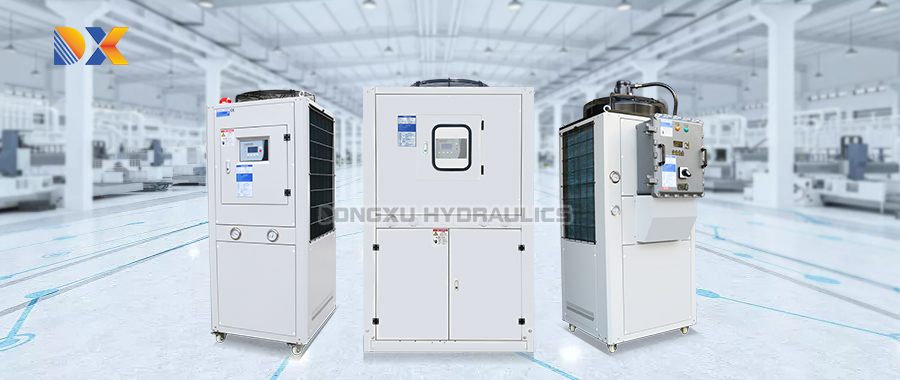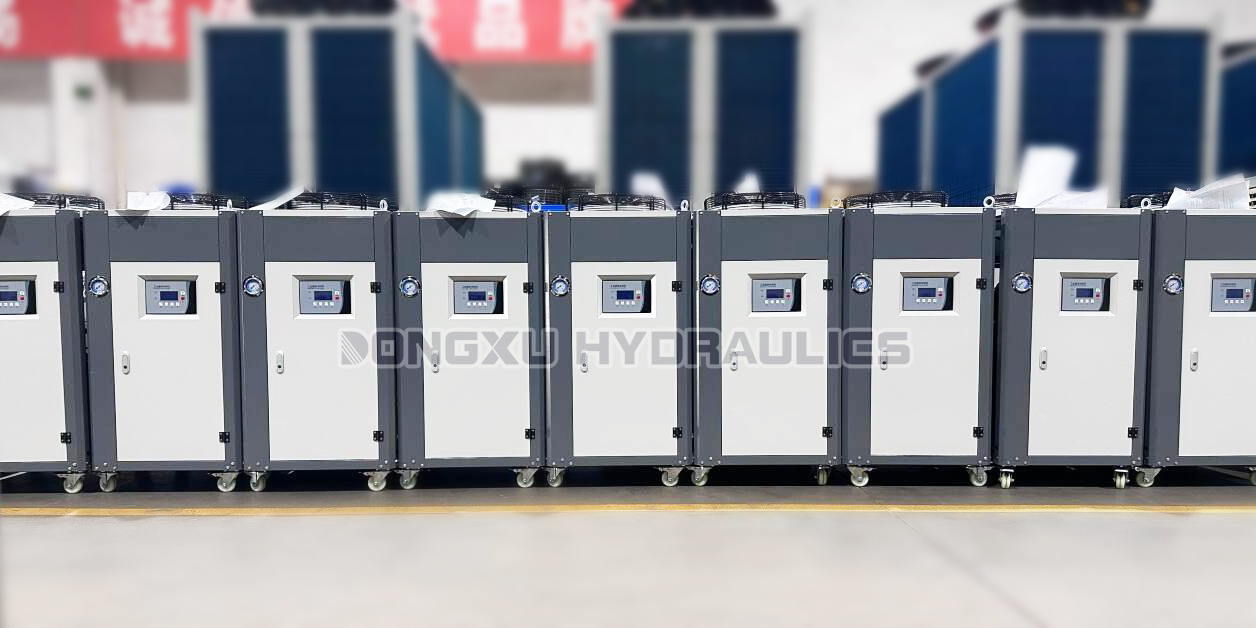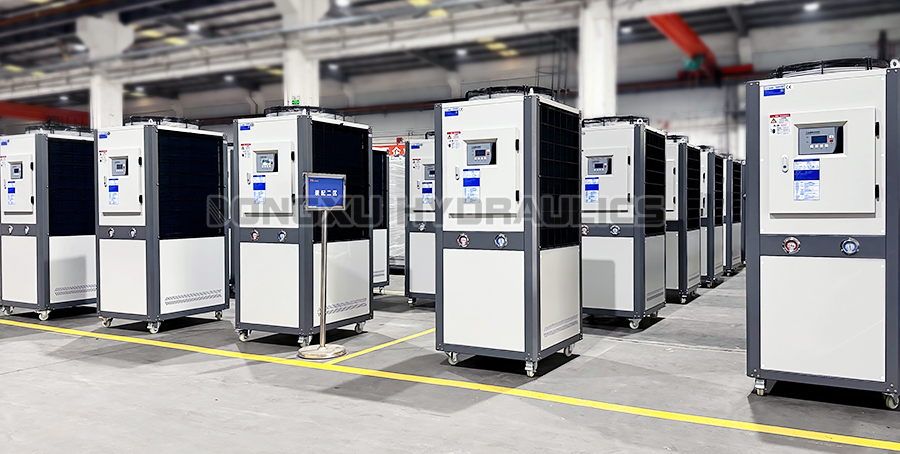In industrial production and equipment operation, temperature control is the key to ensure stable operation and prolong service life of equipment. When the equipment ‘heats up’under high-intensity work and is in urgent need of efficient heat dissipation, the oil-cooled unit is just like a calm‘temperature guardian’, precisely regulating the temperature by virtue of its unique structure and operation principle. Today, let's get to know the oil-cooled unit in depth, and explore the mystery of its efficient cooling by the refrigeration system, the oil circuit system and the electrical system of the three core systems operating in concert.

Refrigeration System
The refrigeration system includes: compressor, finned condenser (shell and tube condenser), fan, liquid storage cylinder, filter drier, capillary tube, plate evaporator and refrigeration pipeline.
Oil-cooled unit by the combination of refrigeration system + oil circulation system + electronic control system; equipment start-up, the refrigeration system operation for heat dissipation cooling, oil through the circulating oil pump into the refrigeration system evaporator (brazed plate heat exchanger). Internal fluorine oil heat transfer mode, the temperature of the oil absorbed into the refrigeration system, through the compressor compression by the condenser through the fan discharge, to get the oil cycle of cooling purposes.
Refrigeration system part: similar to the principle of air-conditioning refrigeration, by the compressor compression of high-pressure exhaust → condenser heat dissipation → throttling device → low-pressure evaporator heat absorption → return to the compressor so that the cycle cycle to achieve the purpose of cooling.

Oil System
The oil system includes: circulating oil pump, plate evaporator, electric heater and oil pipeline. Among them, circulating oil pump and electric heater are optional parts, and the rest are basic configurations.
Generally, the oil cooler adopts two kinds of circulating cooling methods: built-in oil pump circulating cooling method and external oil pump circulating cooling method.
Built-in oil pump circulating cooling method refers to the oil cooler internal oil pump will be pumped out of the oil tank, through the oil pipeline into the oil cooler plate evaporator, and low-temperature and low-pressure liquid refrigerant heat exchange to achieve the purpose of cooling. The cooled oil is returned to the tank for mixing and then pumped out by the oil pump for re-circulation.
External oil pump circulation cooling method means that the oil cooler is not equipped with an internal oil pump, and the oil in the tank is pumped out through an external independent oil pump and sent to the oil cooler system for cooling, and then returned to the tank for re-circulation.
The circulating oil pump is the power source of oil circulation, through which the oil is pumped out from the oil tank and sent into the oil cooler for heating or cooling.
Oil circulation: User's equipment liquid tank → circulating oil pump → oil cooler evaporator (heat exchange) → user's equipment liquid tank, and this cycle realises the cooling and constant temperature of the equipment oil.

Electrical System
The electrical system includes: microcomputer temperature controller, circuit breaker, AC contactor, various types of relays, switches and indicator lights.
The microcomputer temperature controller (installed on the control panel of the electrical box) used in the oil cooler is used to start the equipment, shut down the equipment, detect and control the oil temperature. It is generally divided into two types of systems: single compressor and double compressor.
 GearboxesAgriculture/Products8
GearboxesAgriculture/Products8 GearboxesAgriculture/Products8
GearboxesAgriculture/Products8 GearboxesAgriculture/Products8
GearboxesAgriculture/Products8 GearboxesAgriculture/Products8
GearboxesAgriculture/Products8 GearboxesAgriculture/Products8
GearboxesAgriculture/Products8 GearboxesAgriculture/Products8
GearboxesAgriculture/Products8 GearboxesAgriculture/Products8
GearboxesAgriculture/Products8 GearboxesAgriculture/Products8
GearboxesAgriculture/Products8 GearboxesAgriculture/Products8
GearboxesAgriculture/Products8 GearboxesAgriculture/Products8
GearboxesAgriculture/Products8 GearboxesAgriculture/Products8
GearboxesAgriculture/Products8 GearboxesAgriculture/Products8
GearboxesAgriculture/Products8 GearboxesAgriculture/Products8
GearboxesAgriculture/Products8 GearboxesAgriculture/Products8
GearboxesAgriculture/Products8 GearboxesAgriculture/Products8
GearboxesAgriculture/Products8 GearboxesAgriculture/Products8
GearboxesAgriculture/Products8 GearboxesAgriculture/Products8
GearboxesAgriculture/Products8 GearboxesAgriculture/Products8
GearboxesAgriculture/Products8 GearboxesAgriculture/Products8
GearboxesAgriculture/Products8 GearboxesAgriculture/Products8
GearboxesAgriculture/Products8


